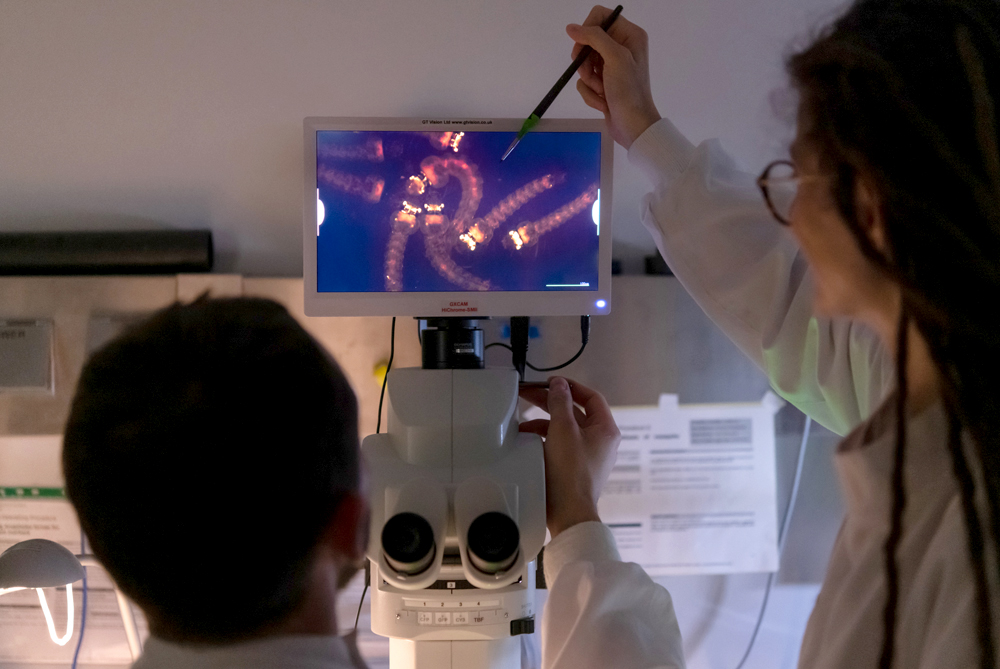
WHO Presents Latest Innovations in Controlling Malaria
April 27, 2022| |
The World Health Organization (WHO) recorded a significant rise in the global burden of malaria in 2020, with approximately 627,000 deaths and 241 million new cases. WHO aims for a 90% decrease in malaria case incidence and mortality by 2030, which will need renewed global attention, increased funding, and continuous research and development of new interventions.
Current tools used to combat the disease, such as indoor residual spray and bed nets, are not enough to achieve a malaria-free world. These tools are not reaching all the populations at risk and, when they do, it is not guaranteed that they will be correctly and frequently used. In addition, WHO already expressed concerns about the increasing insecticide and antimalarial drugs resistance.
Scientists are currently investigating a number of new tools that can potentially contribute to malaria eradication, including gene drive. Dr. Mamadou Coulibaly, principal investigator at Target Malaria Mali, discussed the potential advantages of adding gene drive technology to the anti-malaria toolbox. “If you release a male mosquito that has this gene drive technology, it will impair the fertility of the female when it mates, so there's no progeny and the population is reduced,” he explained.
WHO highlights that the remarkable potential benefit of this technology is its area-wide effect – gene drives can potentially reach locations where the other control tools may be difficult to apply. “It doesn't discriminate between poor and rich. Once the technology is employed, it can do the job wherever mosquitoes are,” Dr. Coulibaly added.
The piece also explores other promising tools such as:
- insecticide-treated nets with improved pyrethroids' lethality or other more potent insecticides;
- attractive targeted sugar bait, an outdoor bait station to attract and kill mosquitoes;
- spatial repellents, which release volatile chemicals into the air that change mosquito behavior; and
- endectocides, drugs ingested by humans that can exert an effect on mosquitoes that bite them.
Read more from the World Health Organization.
| |
You might also like:
- Lessons Learned from Target Malaria to Help Guide Future Gene Drive Strategies
- Scientists Develop Gene-Edited Mosquito to Help Eliminate Malaria
- Plant Scientists Boost Malaria Drug Yield in Plant
Biotech Updates is a weekly newsletter of ISAAA, a not-for-profit organization. It is distributed for free to over 22,000 subscribers worldwide to inform them about the key developments in biosciences, especially in biotechnology. Your support will help us in our mission to feed the world with knowledge. You can help by donating as little as $10.
-
See more articles:
-
Gene Drive Supplement (April 27, 2022)
- WHO Presents Latest Innovations in Controlling Malaria
- Gene Drive Model Increases Knowledge Against Destructive Bee Parasite
- Development of CRISPR-Cas9-based Gene Drive in Budding Yeast
- CSIRO Research on Spatial Modeling for Population Replacement of Mosquito Vectors
- CBD Acknowledges Science and Innovation Valuable for Conservation
- Experts Explain Difference Between CRISPR and Gene Drive
-
Read the latest: - Biotech Updates (November 26, 2025)
- Gene Editing Supplement (November 26, 2025)
- Gene Drive Supplement (February 22, 2023)
-
Subscribe to BU: - Share
- Tweet

